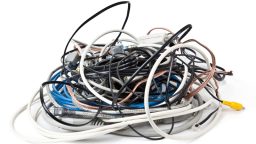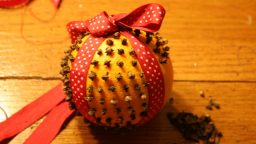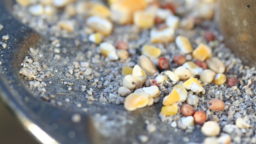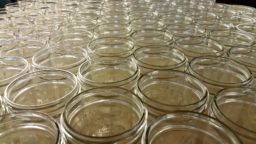Since the dawn of cable TV, the number of electrical type cording we have around the house has expanded almost exponentially. What started with coaxial and extension cords now include shorted out or plain outdated AV connectors, HDMI wiring, and USB cords in about every shape, size, and color.
If you are anything like my family, you have at least one box filled with outdated wiring, some of which is so old you probably have no idea what ancient piece of tech you’ve since gotten rid of it used to go to. The first idea we usually have is to toss them in the trash. Next time you are ready to purge your collection, stop and consider one of these options instead.
1. Sell Them
Does this sound familiar? You’ve upgraded your camera/laptop/computer/monitor/etc. and now you have a collection of accessory cords that still work perfectly, but you have absolutely no use for.
Believe it or not, there are techies out there who may want them. They may need a replacement cord for an item they refuse to part with, they may be “frankensteining” their own unique machine and need just the spare cord you want to part with.
If you’ve managed to keep track of the specs of some of your cords and the stuff they went to originally, you can sell these cords online or at your next garage sale and make a little extra cash on something you would otherwise toss aside.
Bring batteries back to life with this simple battery reconditioning resource…never buy batteries again! Learn More Here >>>
2. Recycle Them
It probably won’t shock you to hear that electronic cords and cables are not biodegradable. Fortunately, recycling is getting easier. Even if your local curbside service doesn’t take them, you can do a search for electronic recycling in your area. Best Buy has a recycling program for electronics. The policy changes occasionally so check with your local store to see what they currently take, how much at once and if there are any fees.
Suggested Article: 5 Creative Ways to Reuse Old Cans
3. Upcycle Them
One of the things most of these cords have in common is copper. Copper is not only a good conductor; it looks good all by itself.
Copper wire has many distinctive properties that have made it a go to wire for projects. The wires flexibility is matched by its versatility.
Although some wire crafting projects require special tools, plus time and years of practice, others are relatively easy and can be accomplished with just a few basic tools from your toolbox and time to have fun. Using copper wiring for a project adds an additional level of aesthetic that will enhance the finished product even more.
You can “harvest” the copper wire from cables for homemade jewelry and other craft projects. Collect your copper by using wire snips to cut it out of the PVC covering and dielectric spacers.
Depending on the type of cord you are cutting open, you can end up with different gauges by using not only the main wiring but by unbraiding the thinner wire that makes up the protective guard.
One of the easiest copper wire projects you can do it creating ire Word Art. The process is simple.
- Use MS Word or a similar program to type your word in the font you want to copy and then select the font size you want the project to be.
- Print out your final design on paper to use as a guide.
- Using wire snips, needle nose pliers and regular pliers, bend the wire to create the shape of the letters, checking your design by laying the wire on the printout.










